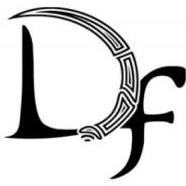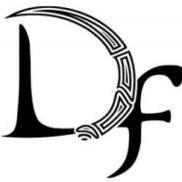
Peter Ellis
Members-
Posts
236 -
Joined
-
Last visited
LW Info
-
Leatherwork Specialty
historic, middle ages
Recent Profile Visitors
7,653 profile views
Peter Ellis's Achievements

Member (2/4)
-
Newbie's Holster
Peter Ellis replied to StrayDogLamont's topic in Gun Holsters, Rifle Slings and Knife Sheathes
It looks to me as if you drilled the holes for the stitches. I don't have a problem with that, but in this case it looks like the holes are quite a bit larger than they needed to be for the thread you used. Tighter fit would help the stitching look better as well as not catching crud in the excess space that is likely to shorten the overall life expectancy of the piece. Nevertheless, it's a nice piece. Get the stitching tightened up that little bit and you'll be looking really sharp -
Billy & Charlie for the pewter bits ? All looks very nice.
-
There's another direction altogether you can take this. My girlfriend got a Kindle for Christmas. We discussed what she wanted in terms of a "Case". Her preference was for something that she puts the Kindle in when she's not using it, rather than for something it stays in while she's reading. So I made a felt lined pouch with a beavertail type closure. Really, really simple. Protects the Kindle from scratches when it's being carried around in her bag.
-
Very cool. Thanks for the lead. Definitely going to have to give that technique a try
-
Looking for help with laying out lettering on curves. Suggestions ? I need to lay out on a full circle as part of my makers mark design.
-
hmm, .. I'm pretty certain I did not post this in "computer help". I was hoping that someone who remembered the old thread would be able to give me a hand with finding the information that was in it. I really doubt they'll come across the question here.
-
I know that I read in a thread where Bob Parks was describing the way he does lettering - he pulls up a font he likes, sizes it to where he wants it, and bends it around any curves that may be needed, then prints it out and uses that as his lettering pattern. At least, that's pretty much what I remember, and who I remember wrote it But, despite trying the search function and looking through a bunch of threads, I can't seem to find it. And I have need of the ability to bend my lettering around a circle... Does anyone recall the thread I'm thinking of, or can anyone recommend a good (free and easily obtained would, of course, be nice) program for doing the kind of thing I'm talking about ? Thank you.
-
I had a friend who made and sold some very fine knives. He had a sign at his table that read "Band-aids $5" held in place by one of those fake severed fingers.
-
I've been getting an issue that may or may not be related. Sometimes I see the thread fraying and getting that separation build up at the eye of the needle that you're describing, and sometimes when that is happening I'll find that the top thread has done something cockeyed further back along the line. For example, there's a screw head that sticks out a bit below the top tension spring on the back of the machine at the top (the one labeled #1 in the manual). This screw head will occasionally catch the thread between the head of the screw and the body of the machine. This throws the tension off and my first warning sign is a change in stitch length and the appearance of the bobbin thread on top of the piece. I have no idea how the thread gets itself caught on that screw - but every so often it does. The second thing I've had happening is in the lower tension spring, where the thread comes down through the eye, wraps around the tensioner and back through the eye, then through another eyelet and into the arm. Sometimes the thread hops out of the discs where it belongs, wraps itself around behind the discs, and once again throws off the tension. This one seems to happen pretty consistently when I start getting up to any sort of decent speed with my sewing. It throws itself out of the discs and slams on the brakes by throwing the tension sky high. I suspect the bottom line may be operator error, as I am not entirely confident in my threading process. The manual that comes with the machine really needs to be re-written from scratch with good pictures and drawings and I'm not certain that I'm correctly following instructions
-
Looking For Advice And A Pattern For A Quiver...
Peter Ellis replied to Lwleather's topic in Patterns and Templates
The first thing you need to know is what sort of quiver does your friend favor. There are back quivers, hip quivers, pocket quivers, side quivers (that go on your back, or at your hip - but you get the arrows out from the side instead of pulling them out at the top, so they're 'side' quivers). Each of these fits distinctive shooting styles. Then, there are multiple variations within each category. You really need to know what he wants in a quiver before you get started searching for patterns, much less building one. -
I had a friend make one for my drill press after seeing a couple of versions (plastic and wood) in a Weaver catalogue. I like it and it works pretty well, but the idea of one on the nice handy little Dremel is a really good one I suppose I should add my name to your list
-
How To Market To Leatherworkers
Peter Ellis replied to EmbossingDieCompany's topic in Marketing and Advertising
I subscribed for several years to LCSJ. It's a good magazine and probably the best print media outlet for reaching this niche. But, Johanna is absolutely right. This forum - this community - is the place I come to for ideas and advice about equipment, materials and suppliers. I bought a nearly $3,000 sewing machine from a company that advertises here based on reviews and advice I got here. I'll be buying steel rule dies from an outfit recommended to me by people here. I haven't been able to finalize the design for my maker's mark, but when I do I'll order it made by someone recommended here. See a pattern ? -
Yep - It's a metal bracelet covered in leather and you can bend it to fit a wide range of sizes. I'm pretty sure I read a thread here on Leatherworker.net where someone went into good detail on how they make these, but I couldn't find it with a quick search.
-
When I make these, I put the hinge on the inside, and I run the straps from the inside through slots near the edges (not too near, 1/2 inch in at least). The hinges pretty much disappear, except for the rivets holding them. The straps look more integral - and they really are more integral, because being mounted on the inside and then coming out and pulling the piece together they distribute stress better. Overall, I think the OP's work is terrific and am especially impressed by the attention in creating the quilted padding. Too often nice pieces like these get some blue foam glued inside, rather than a quality of padding that matches the rest of the work.
-
I know there are lots of places to get dies made - so many it makes choosing one difficult. And so I ask for recommendations - places that do good work, places to avoid, etc. Thanks for your help.





